Nataraja is the form of Lord Shiva as the Lord who dances at the time of universal destruction. The dance of Shiva in Tillai, the traditional name for Chidambaram, forms the motif for all the depictions of Shiva as Nataraja. He is also known as “Sabesan” which splits as “Sabayil aadum eesan” in Tamil which means “The Lord who dances on the dais”. The form is present in most Shiva temples in South India, and is the prime deity in the famous Thillai Nataraja Temple at Chidambaram. The sculpture is usually made in bronze, with Shiva dancing in an aureole of flames, lifting his left leg (or in rare cases, the right leg) and balancing over a demon or dwarf (Apasmara) who symbolizes ignorance. It is a well known sculptural symbol in India and popularly used as a symbol of Indian culture.
The two most common forms of Shiva’s dance are the Lasya (the gentle form of dance), associated with the creation of the world, and the Tandava (the violent and dangerous dance), associated with the destruction of weary worldviews – weary perspectives and lifestyles. In essence, the Lasya and the Tandava are just two aspects of Shiva’s nature; for he destroys in order to create, tearing down to build again.
Characteristics of Lord Nataraja
A cobra uncoils from his lower right forearm, and the crescent moon and a skull are on his crest. He dances within an arch of flames. This dance is called the Dance of Bliss,(Tamil: ஆனந்த தாண்டவம்) aananda taandavam.
The upper right hand holds a small drum shaped like an hourglass that is called a ḍamaru in Sanskrit.[4][5][6] A specific hand gesture (mudra) called ḍamaru-hasta (Sanskrit for “ḍamaru-hand”) is used to hold the drum.[7] It symbolizes sound originating creation or the beat of the drum is the passage of time.
The upper left hand contains Agni or fire, which signifies destruction. The opposing concepts in the upper hands show the counterpoise of creation and destruction or the fire of life.
The second right hand shows the Abhaya mudra (meaning fearlessness in Sanskrit), bestowing protection from both evil and ignorance to those who follow the righteousness of dharma.
The second left hand points towards the raised foot which signifies upliftment and liberation. It also points to the left foot with the sign of the elephant which leads the way through the jungle of ignorance.
The dwarf on which Nataraja dances is the demon Apasmara (Muyalaka, as known in Tamil), which symbolises Shiva’s victory over ignorance. It also represents the passage of spirit from the divine into material.
As the Lord of Dance, Nataraja, Shiva performs the tandava, the dance in which the universe is created, maintained, and dissolved. Shiva’s long, matted tresses, usually piled up in a knot, loosen during the dance and crash into the heavenly bodies, knocking them off course or destroying them utterly.
The surrounding flames represent the manifest Universe.
The snake swirling around his waist is kundalini, the Shakti or divine force thought to reside within everything. This also parallels the cords of life worn by the Brahmins to represent the second rebirth.
The stoic face of Shiva represents his neutrality, thus being in balance.


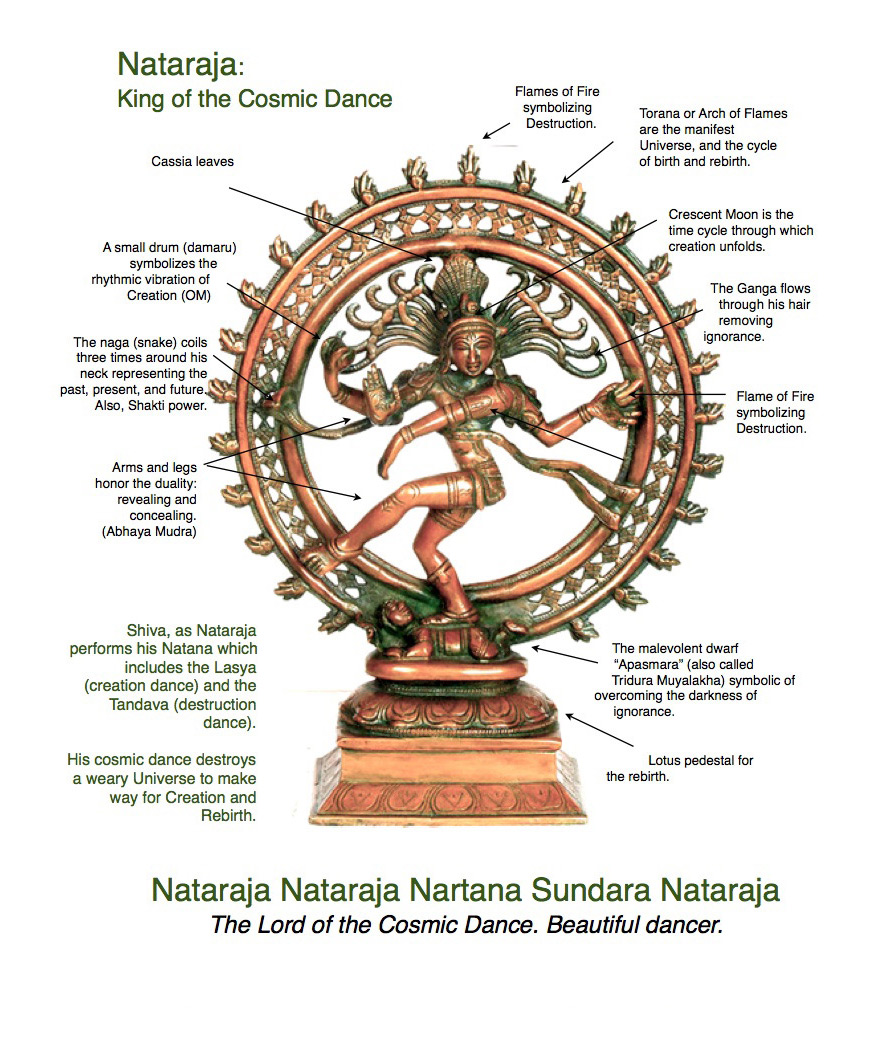
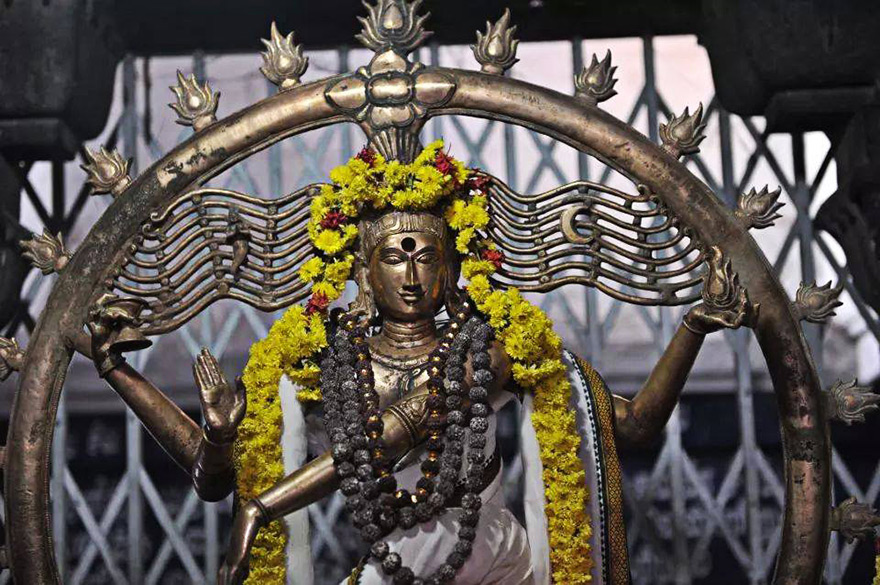
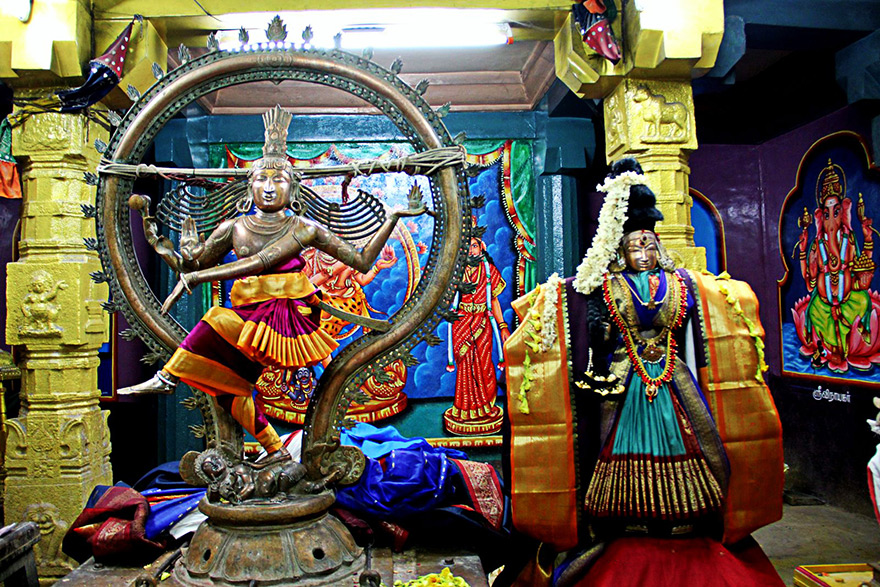
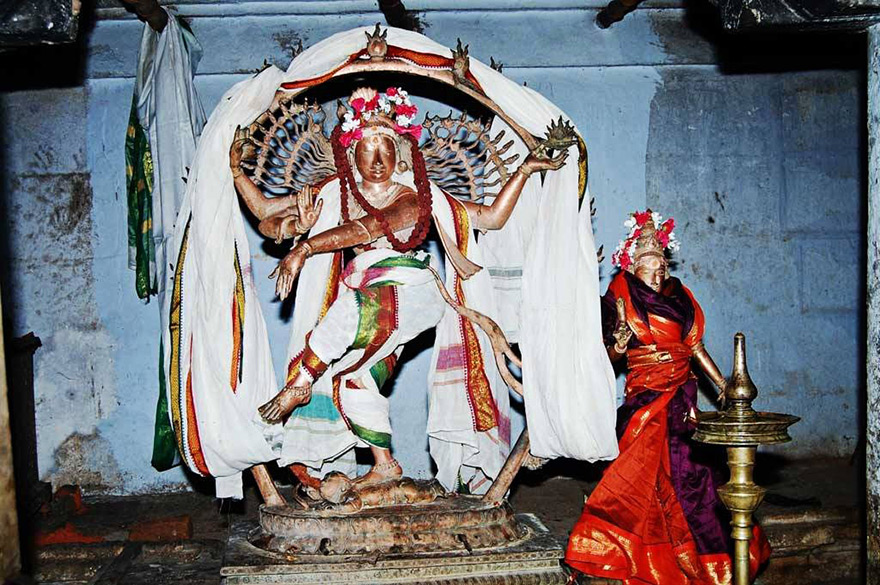
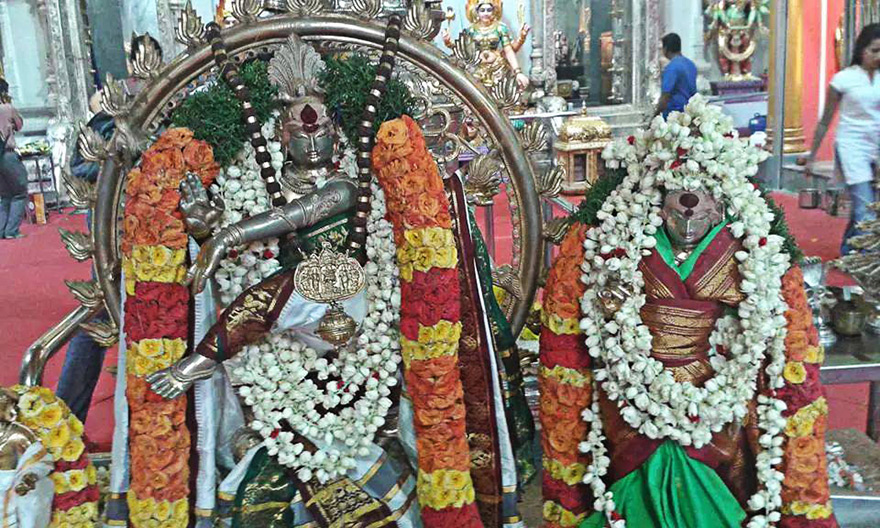
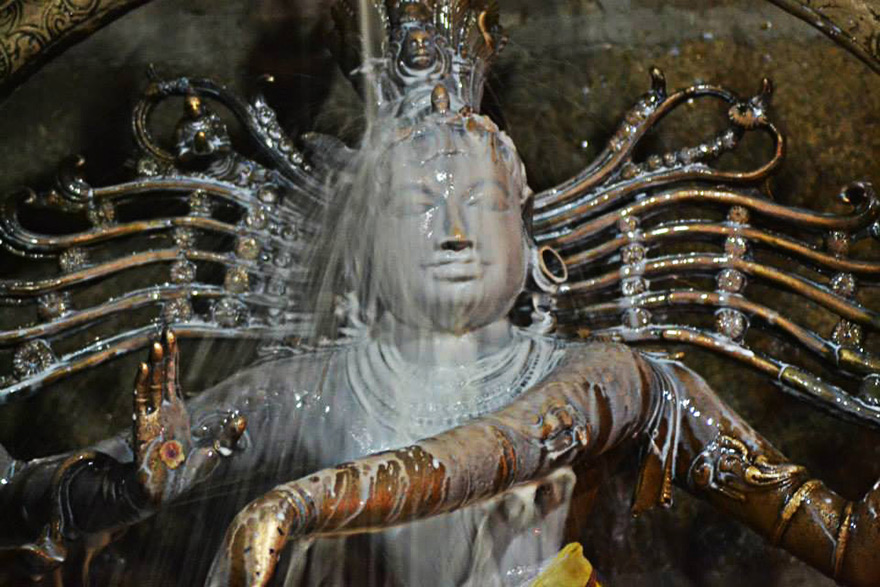
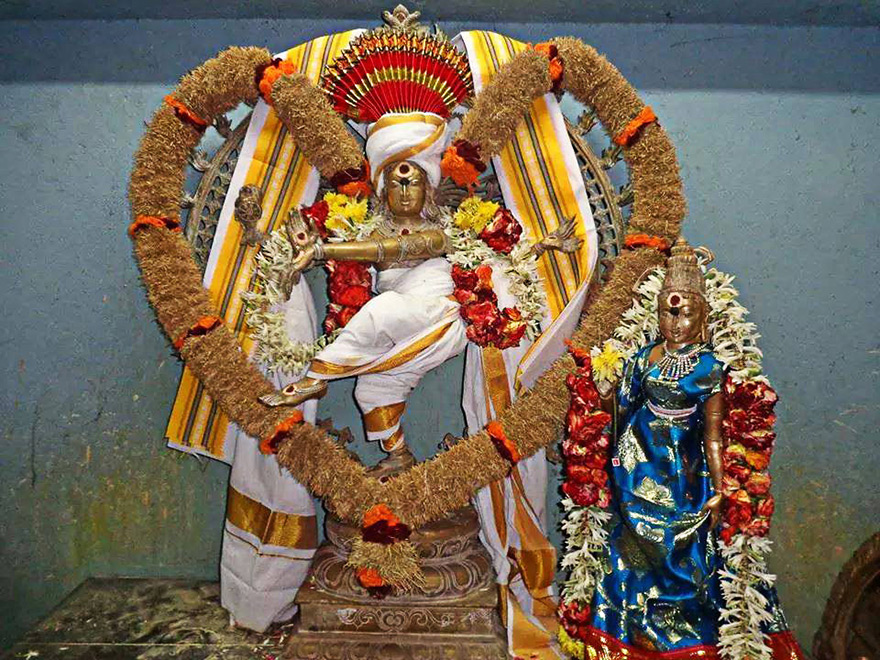
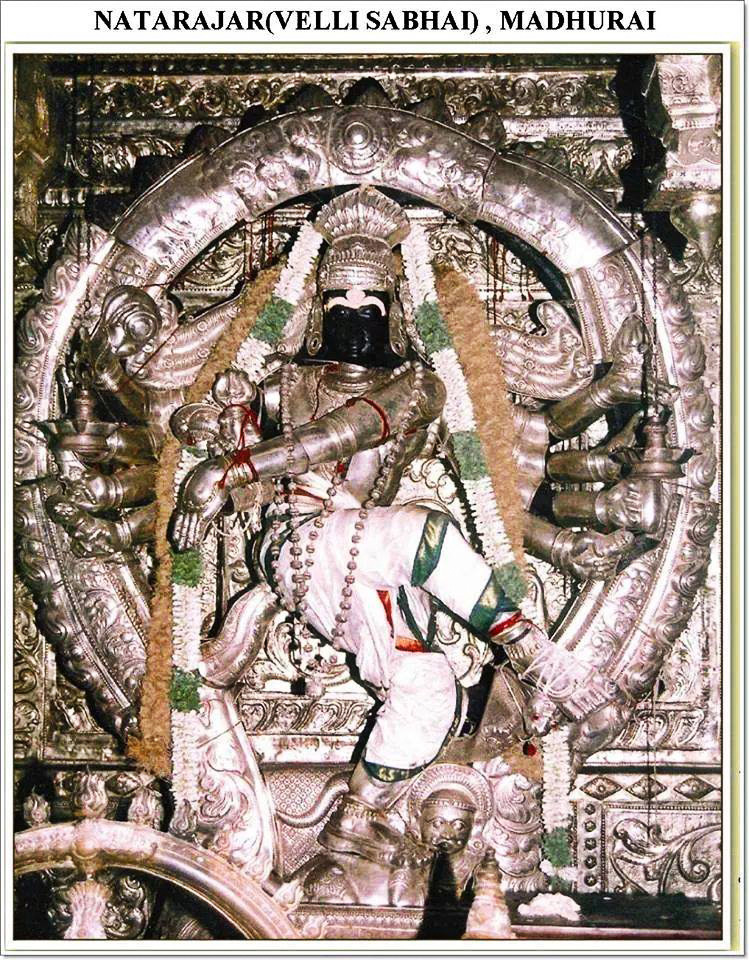
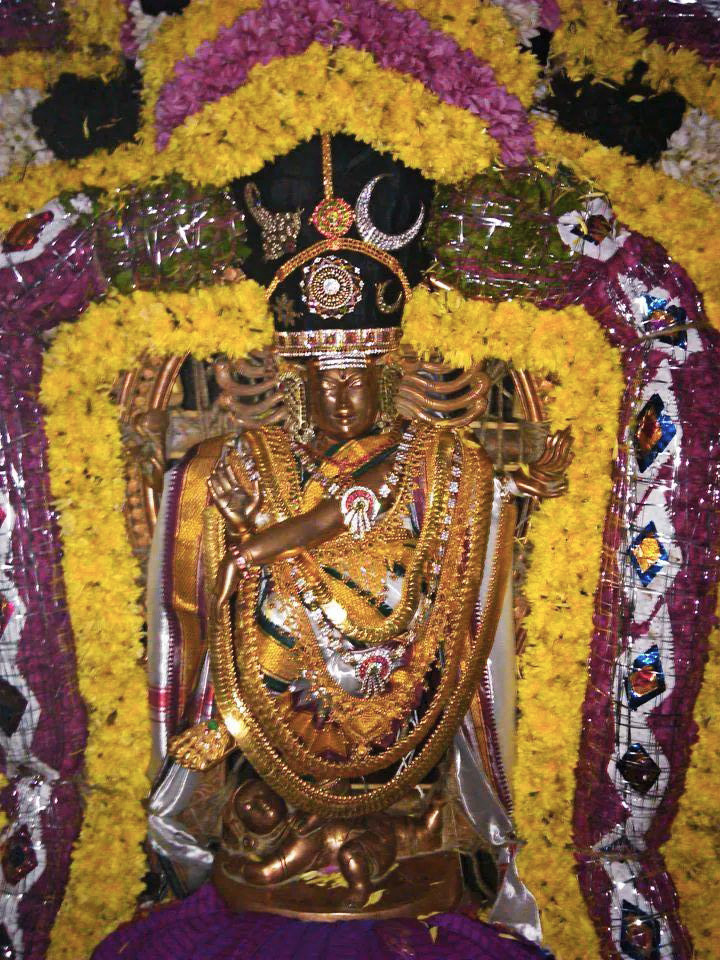
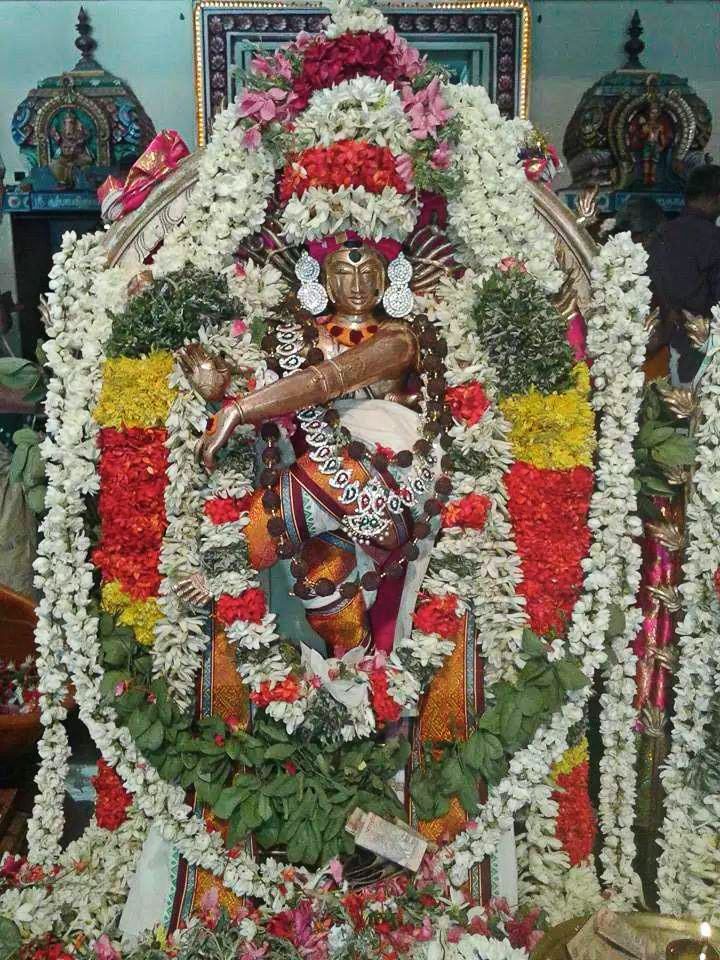
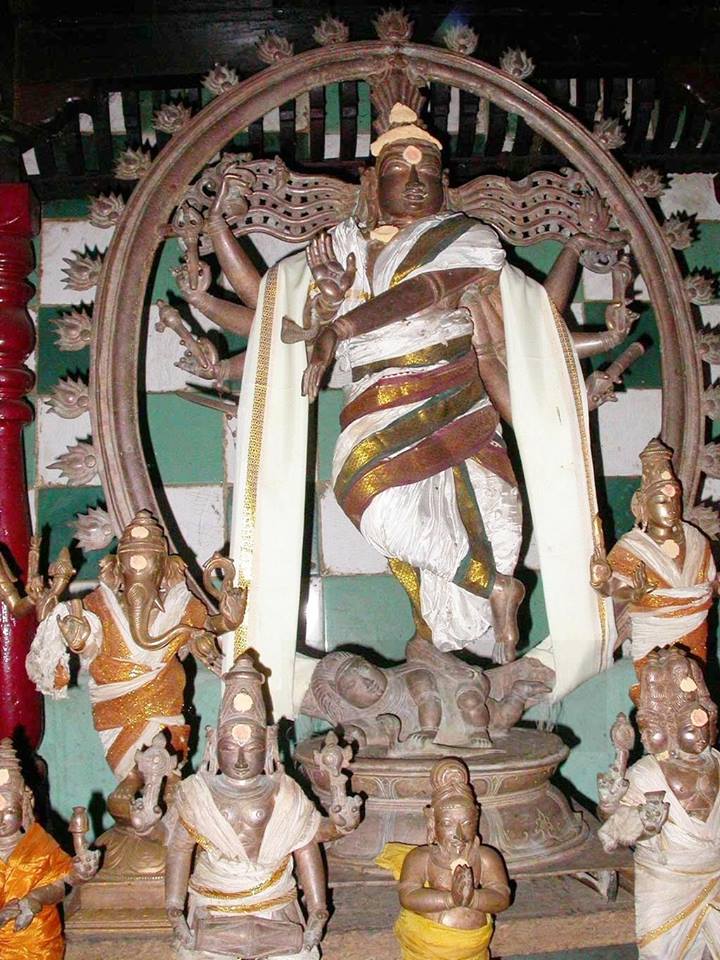
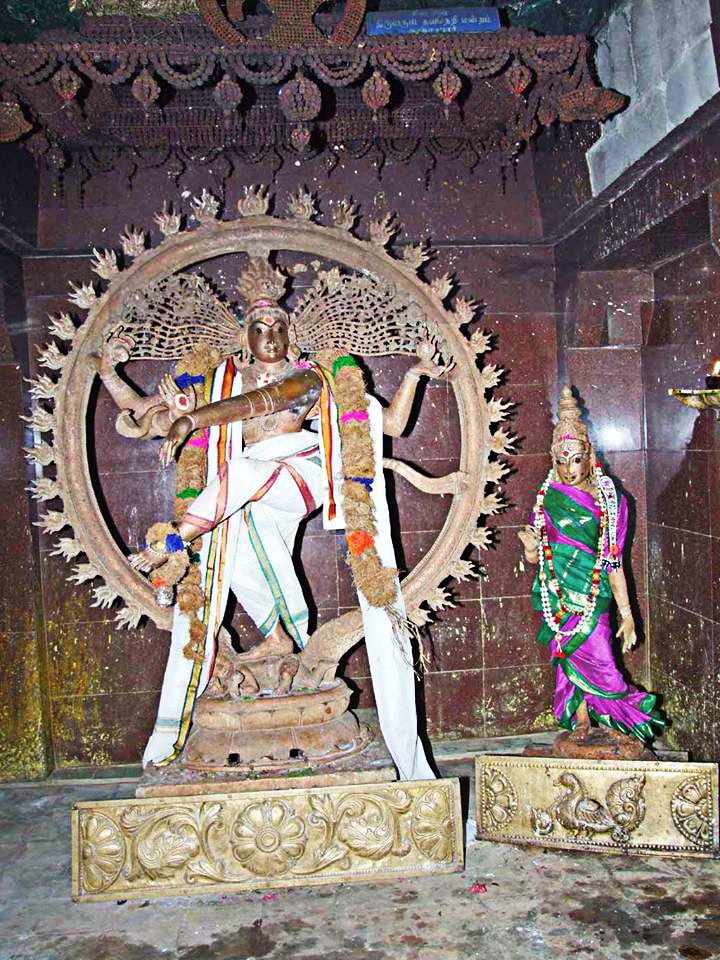
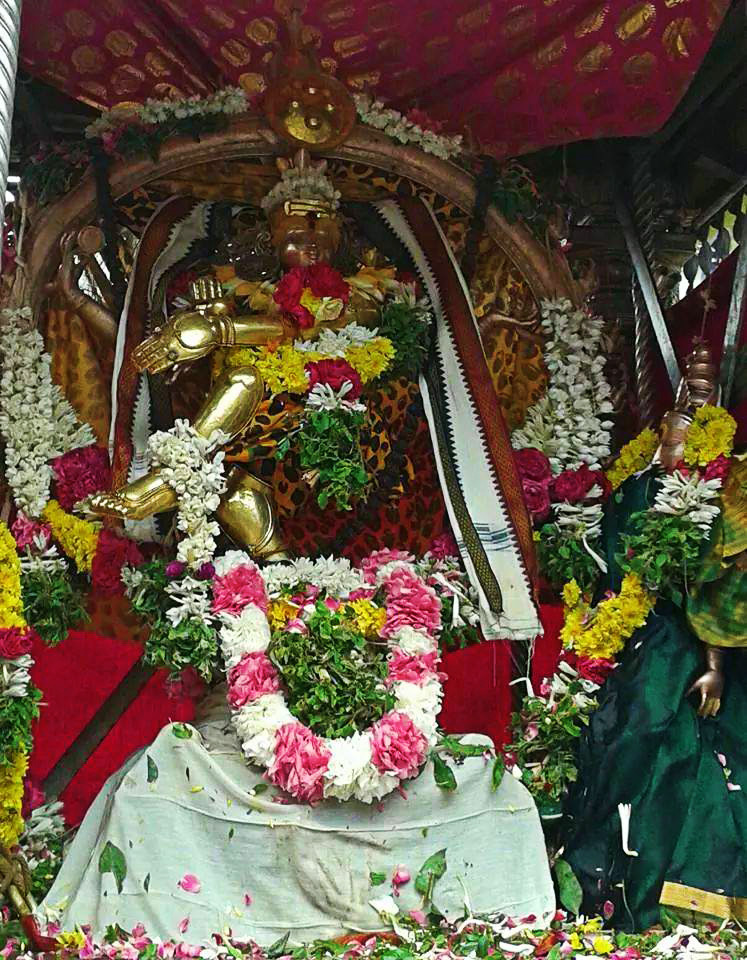
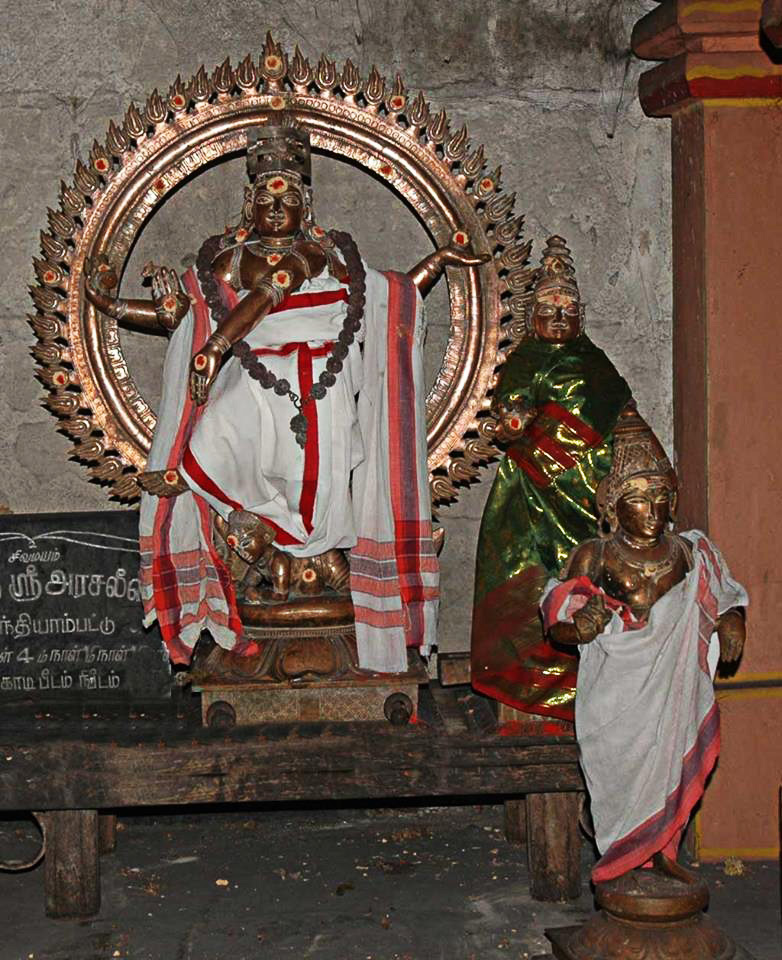
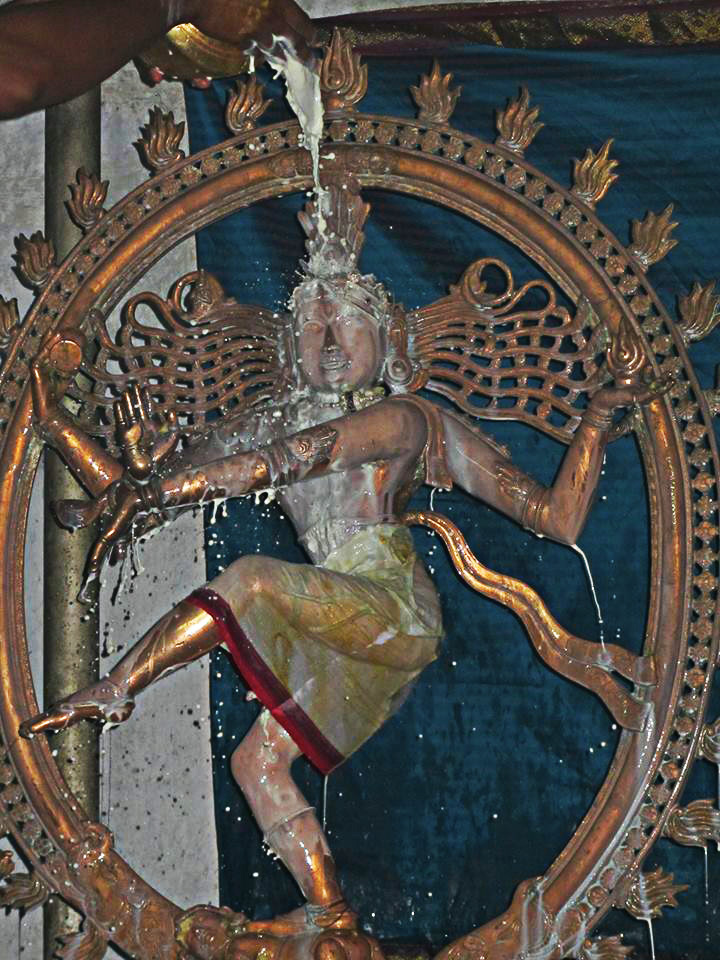
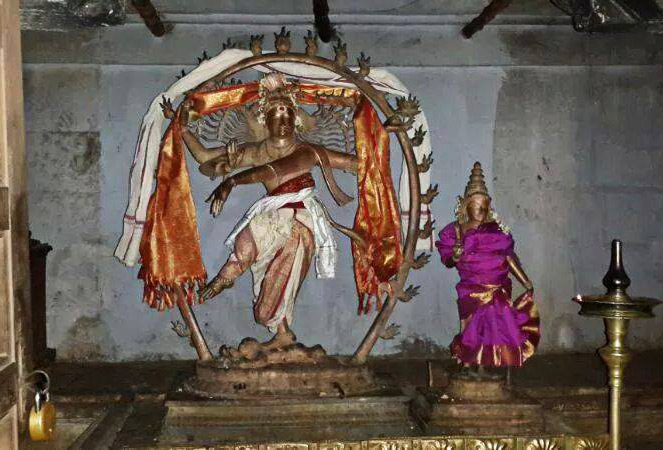
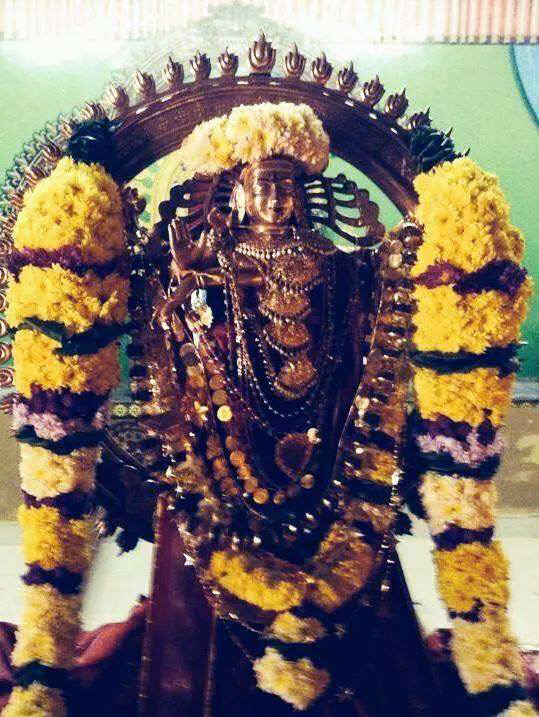
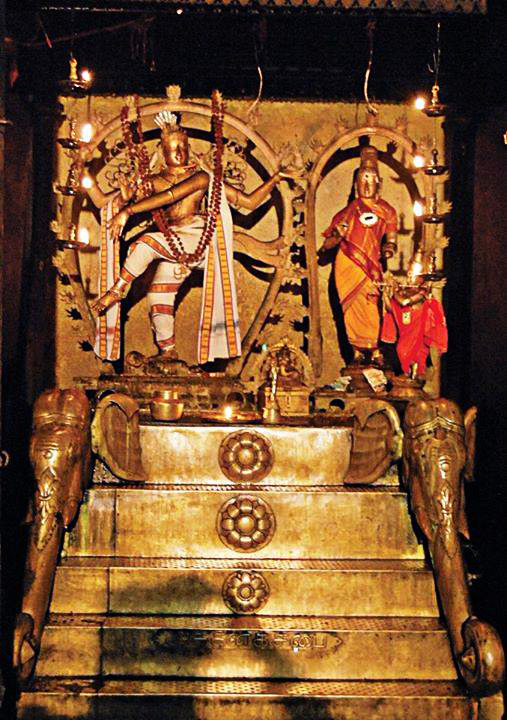
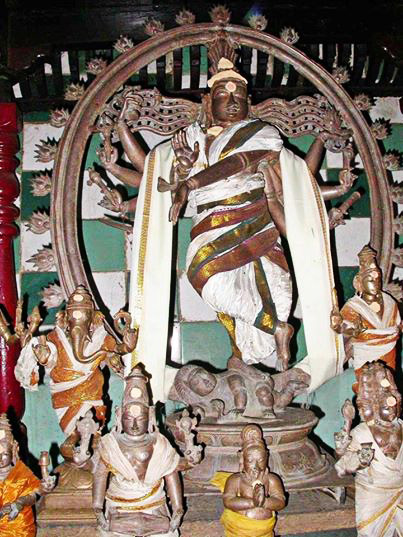

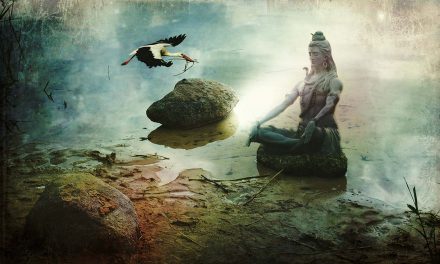










Hi
Excellent pictures of the King of Boolokha, (the earth).
All glory to Lord Hara!
Simply beautiful, thanks for sharing
Hey Adhyguru shankarpita, natraj raj namo namah;
Very Nice & beautiful. The lord will surely safe guard his home & kids.
Om Namah Shivaya Namah.
Jai Nataraja Swamy.
All pictures and narrations are very nice.
I am very lucky to view these imajes
I am also lucky to see different Natarajas
I am really lucky to see the rare pic. Of Natraj .aap ki jai ho
The pictures of Madurai are very nice and attractive.
The Lord Nataraja’s various postures are good. If the five saba of Nataraja – Chidambaram, Madurai, Thirunelveli, Thirukkutralam, Thirualangadu are included it will be very good.
Namosthuthe natrajawswamy all natarajaswamy murthis are vry beautiful
Feel lucky to see the rare pictures of Almighty… Thanks
your photos are very beautiful but if you could name the places where these gods are found we can see them thank you
I am lucky too see the pictures
Excellent presentation and thanks for taking me round different places. D.V.J.Vittal.
Fine effort and feel happy.
I am an author in Tamil only.
How I share my my writtgings.
Magasree.
I FEEL THAT I’M BLESSED TO SEE RARE PICTURES OF BHAGAWAN SRI.NATATARAJA.
THANKS FOR SEEING THE THILLAI NATARAJAN ON TO DAY MORNING,
Narashima photos are good.
When i see the photo of Singapermal koil (near tamabram shennai) i am very much pleased
l
A.THILLAIRJAN
Please let me know in which temple the Natarajar statue, on the top of this page can be seen. this is definitely not Chidambaram temple Moolavar. Can any one help me know this please